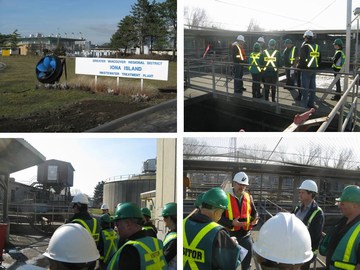Nutrient Recovery: Creating Value from Waste at Metro Vancouver’s Lulu Island Sewage Treatment Plant
In April 2008, the Metro Vancouver Board appointed a 9-person Reference Panel to provide comments and advice on the region’s strategy for updating its Liquid Waste Management Plan. The Reference Panel reports directly to the Metro Vancouver Waste Management Committee.
In February 2009, members of the Reference Panel spent a day at the Lulu Island 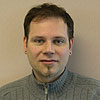 and Iona Island plants in Richmond. “The familiarization tour provided Reference Panel members with an opportunity to see how the plants are operated,” reports Robert Hicks, Senior Engineer with Metro Vancouver and a key member of the team that is writing the Liquid Waste Management Plan. In the course of the Iona plant tour, Robert Hicks provided the Reference Panel with historical context vis-à-vis development of the regional sewerage system.
and Iona Island plants in Richmond. “The familiarization tour provided Reference Panel members with an opportunity to see how the plants are operated,” reports Robert Hicks, Senior Engineer with Metro Vancouver and a key member of the team that is writing the Liquid Waste Management Plan. In the course of the Iona plant tour, Robert Hicks provided the Reference Panel with historical context vis-à-vis development of the regional sewerage system.
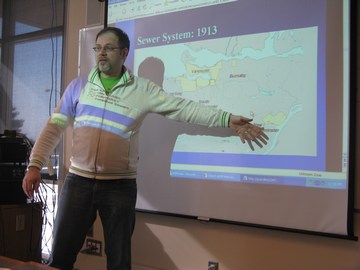
From waste to growing crops
The focus of the Lulu plant tour was on the pilot nutrient recovery technology  developed by Dr. Don Mavinic of the University of British Columbia (UBC), and a member of the Reference Panel. “To demonstrate the potential for sustainable wastewater treatment solutions, we at UBC have developed the technology to capture phosphorus and ammonia from high concentration streams and recycle them into environmentally safe fertilizer,” explained Dr. Mavinic.
developed by Dr. Don Mavinic of the University of British Columbia (UBC), and a member of the Reference Panel. “To demonstrate the potential for sustainable wastewater treatment solutions, we at UBC have developed the technology to capture phosphorus and ammonia from high concentration streams and recycle them into environmentally safe fertilizer,” explained Dr. Mavinic.
“The UBC research effort has been all about producing a sustainable and marketable fertilizer; and we have succeeded! We have demonstrated that we can 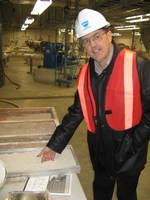 produce a slow-release and non-burning fertilizer from sewage. As long as there are people, sewage-based fertilizer will be a renewable and sustainable resource.”
produce a slow-release and non-burning fertilizer from sewage. As long as there are people, sewage-based fertilizer will be a renewable and sustainable resource.”
“Everyone has heard about Peak Oil. Well, soon you will be hearing more about Peak Phosphates. It is another major sustainability issue looming on the horizon. Because the world’s supply of natural high-quality phosphates is rapidly running out, producing fertilizer from waste results in a very valuable resource.”
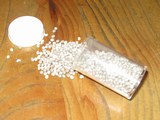 “If the Metro Vancouver region is to begin developing replacement sources for natural phosphates, as well as reducing ammonia in the liquid stream, then building a full-scale system at the Lulu Island plant should become a high priority for implementation,” concluded Dr. Mavinic.
“If the Metro Vancouver region is to begin developing replacement sources for natural phosphates, as well as reducing ammonia in the liquid stream, then building a full-scale system at the Lulu Island plant should become a high priority for implementation,” concluded Dr. Mavinic.
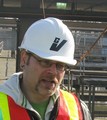 “What was once waste is now raw material. The more flexible and adaptable that we can be in developing the long-term plan, the better the value that the region will receive from the capital investment,” observed Robert Hicks in summing up the discussion of the potential for future nutrient recovery at Metro Vancouver treatment plants.
“What was once waste is now raw material. The more flexible and adaptable that we can be in developing the long-term plan, the better the value that the region will receive from the capital investment,” observed Robert Hicks in summing up the discussion of the potential for future nutrient recovery at Metro Vancouver treatment plants.
Photo Gallery
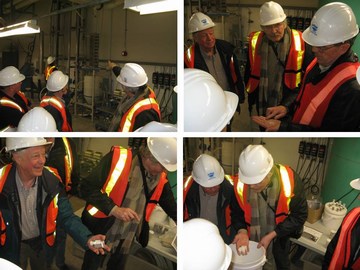
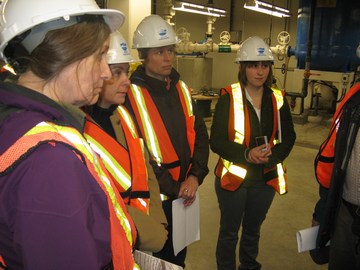
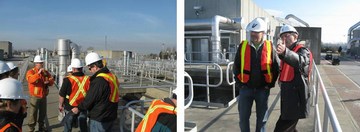
Liquid Resource Management Puzzle
The anticipated capital cost for sewage treatment plant upgrading and expansion is $1.4 billion. “We believe the understanding that we gained from the plant tours  will help us make informed recommendations when we report back to the Waste Management Committee,” added Susan Rutherford of West Coast Environmental Law, a Reference Panel member.
will help us make informed recommendations when we report back to the Waste Management Committee,” added Susan Rutherford of West Coast Environmental Law, a Reference Panel member.
“These tours reinforced for panel members the benefit of aligning all of the pieces of the liquid resource management puzzle, starting with a sustainability vision for the region, to implementing that vision, by integrating multiple goals (such as preserving ecosystem function and retrieving and adding value) into the design of our neighbourhoods and our infrastructure.”
